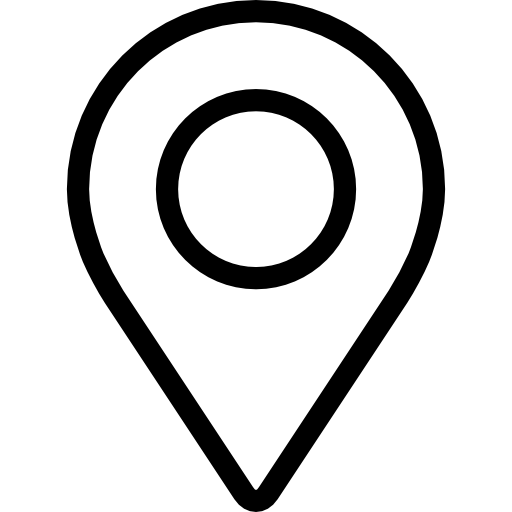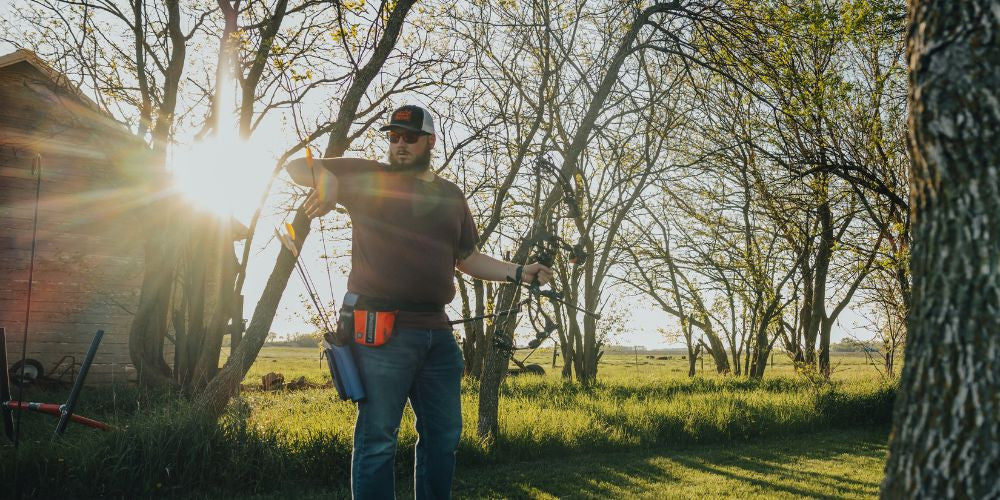The bow sight is an intricate little device that requires fine tuning in order to be accurate. If you set the sight right then you can score a direct hit on target with a constant score. There are a number of different sights out there on the market but for modern target archers getting the right sight is important because it’s vital to your accuracy. A sight has to able to withstand the vibration and shockwaves that run the bow from the release of the arrow. It has to be able to remain consistent with your stance and draw length otherwise you’ll have to readjust it every time you draw again. If they have loose pin blocks that rattle when you fire then you are in serious trouble because it means you can’t get accurate enough. I started off with a small low cost sight that cost me about £20, which was good for a beginner but when I started to move up my game I needed something a bit more advanced in the price range of £60 - £90. Recently I just bought myself a new sight with a carbon shaft and can absorb most of the shockwaves and a rigid sight block with more locking nuts that can tighten it better to resist against shockwaves. It can also be adjusted in micro-increments to allow it to be accurate to within 0.1 centimetres.
Understanding how they work
Earlier this year I wrote a piece on the science of projectile motion called ‘Classical Mechanics of Archery’ and now with a bow sight I can demonstrate how to experiment with projectile motion. Let’s recap on that for this post. Projectiles like arrows don’t shoot in straight lines, they travel in a curved path from the archer to the target called a parabola. The force of the string on the arrow forces it to fly in an upward direction and then as gravity and air resistance slows it down the arrows takes a dive towards the target and hits the spot where it lands. The T-shape of the sight’s horizontal and vertical shafts are built for the parabolic projectile motion of arrows. There are two shafts that allow you to move the pin sight horizontally and vertically. Both of them can be adjusted for the shooting distance. The horizontal shaft is fixed to the riser and can be adjusted backwards and forwards.
The vertical shaft has a numerical scale on it which you use to mark your position corresponding to each distance. When I go out and practice at each distance I use a record of settings in a notebook as an aid to memory to remember what setting to put my bow sight on. There is also another adjustment for the pin sight in which it can be moved along the pin block. The pin block is the part that fixes the pin sight to the vertical shaft. This can adjust the bow sight left or right as well.
Getting the group right
One of the first things my archery instructor said to me was to get a grouping of arrows in the middle. To do this the trick is to get the sight to follow the arrow that you shot previously. To understand how this works imagine the target as a clock face and your arrows group towards the three o' clock position. To get the arrows group towards the bullseye you would need to move your sight to the left towards the three o' clock position. Try shooting again and you should see your arrows group within the bullseye or yellow area. If your grouping is in the one o' clock position then adjust the sight to the right and move it up slightly. Shoot again and it should hit the centre of the target.
Your bow’s draw weight also plays a part in the accuracy of your arrows. A heavy bow will exert a considerable amount of force on the arrow that it can over shoot on a setting for the bulls eye meant for a lower poundage bow. I changed my limbs last year going from 24 pounds to 30 pounds and the difference in the sight setting is obvious by the poundage.
| Poundage | 24 lbs | 30 lbs |
| Sight Setting/Distance | 2.1/ 20 yards | 1.5/ 20yards |
| 3.4/ 30 yards | ||
| 5.5/ 40 yards | 4.6/ 40 yards | |
| 7.5/ 50 yards | 7.3/ 50 yards | |
| 8.6/ 60 yards |
As this chart shows there is a slight variation in the poundage for each of the distances. This is from my notebook on my progress.
Take a look at your bows riser where the arrow rest and the sight pin are aligned in parallel to one another. The position of the sight pin and the arrow rest forms the longest length of an imaginary triangle. In physics the dimensions of a parabola are measured using trigonometry, which is the study of triangles. When I shoot with my bow and adjust the target I often wondered if there is a relationship between the shape of the triangle from the arrow rest and the pin sight and the parabolic shape of the arrow’s trajectory. Well judging by the sight settings for each distance there seems to be a connection there. The higher sight settings mean that you have to lift your bow up high to get it at the right angle of inclination to hit the target. However that arithmetic requires a bigger investigation that we won’t go into at this time. When it comes to adjusting your sight, what matters is the power of the bow and the distance towards the target.
Choosing the sight
The best sight to choose from has to be one that is rigid and shock absorbent because the shockwaves that run through the bow on release can loosen the bolts and the pin block. My last sight was easily prone to shockwaves and as a result the bolts loosened from the thread from time to time. It was really bad for maintaining accuracy. What was even more annoying was the constant rattling the pin block made when I released. This rattle sound is a bad sign for an archer because it means that you are losing your sight! I decided enough was enough and got myself a brand new one with a carbon shaft and more locking pins. The locking pins on the bow sight can be used to tighten the components so that the sight can resist the shockwaves better. So you don’t have to keep adjusting the sight and focus on shooting.
Another useful feature on a good bow sight is one that has micro-adjustment increments on the shaft. Moving the pin sight to the right mark is easy but when you are trying to make it with pin point accuracy it can be a bit cumbersome. But this can be perfected with a micro-adjustment knob which when turned will move the sight along the gauge to within a fraction of a centimetre. This can be an advantage if the bow sight makes the smallest of slippages. You just turn it back to the right setting with a few turns of the knob.
You may find that it takes time to get a direct hit on the bullseye but if you struggle to get there then don’t be so hard on yourself. I think of the time it takes to get it right as a way to learn how to succeed. It’s just the right idea of a mental exercise to test your perseverance and determination. Thomas Edison had a saying about learning how to succeed in inventing a good machine. ‘I have not failed, I have found 10’000 ways that won’t work’. So if you shoot 5 dozen arrows in a Portsmouth and only manage to get one in the 10, then that means that you have found 1 way to shoot accurately 59 ways to miss it. So keep working hard at it and learn to shoot well and stick to that 1 way to do it properly.
 cust@legendarchery.com
cust@legendarchery.com 302 503 5767
302 503 5767 Whitestown, In 47075
Whitestown, In 47075



